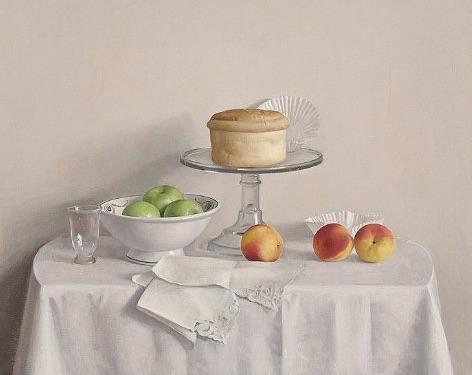Han’s solo
Decades ago, my wife and I (with our infant daughter) moved from my first job in Great Falls, Montana to Utica, New York. Within a year or two of that move, I attended two seminal exhibitions at the Munson-Williams-Proctor Institute, where I was enrolled in art instruction for a time. I had consciously refused to attend art school, even though I’d started painting seriously in my mid-teens, and made up for it by working with artists at places like MWP and later at Memorial Art Gallery. I’m going to write elsewhere about the article in Art News that turned me against the world of art in my teens–it’s intellectual pretensions, the post-modern obscurantism of art criticism, the way in which so much art during and after the Sixties arose out of a kind of snotty disdain for the ordinary life of common people. It was all repellent to me, and the artists I loved like brothers at the time–Blake, Van Gogh, Gauguin, Matisse, Braque, Rouault, Klee–struck me as obsolete, historically relevant but offering nothing for a contemporary artist to assimilate. I was too put off by the comparative austerity of Diebenkorn’s abstractions to see how they sprang almost directly from Matisse. But even aside from the way in which the art world seemed like an exclusive club devoted to making itself inaccessible to most people, I believed that I was a late-comer who had no place in the world of contemporary art. I looked at the increasingly sterile ways in which The Next Big Thing in art simply confirmed how all the revolutions were over and there was nowhere new for painting to go, if you understood progress as increasing levels of freedom for visual artists. I didn’t see what was actually going on, the way Arthur Danto did–how Pop Art made anything possible and therefore anything was now acceptable and contemporary. Anything could be art, including the sort of work done in the past. So I continued to paint, out of my own sense of inner necessity—but feeling as if my work had no place in the larger scheme of things, rather than paint and teach, I became a reporter and a writer.
Yet when I found myself walking into “An Appreciation of Realism” at Munson-Williams-Proctor in the 80s, I realized what was still possible, and how I’d missed the way art had become, in a sense, ahistorical. It was an exhibition devoted to representational painting and the roster of artists represented was incredible: Bailey, Estes, Pearlstein, Beal, Kahn, Lennart Anderson, Freilicher, Soyer, Leslie, Resika, Jerome Witkins, Katz, Welliver, Guston, Goings, Cottingham, Close, Bechtle, Fish, Beckman, Paul Georges, Leland Bell, Rackstraw Downes, and Fairfield Porter, along with more than a dozen others. It was an amazingly comprehensive curation of contemporary representational painting by all the names that I continued to study for years after I saw that show. It opened my mind to the possibility that I might actually be able to paint in ways that would belong to what was happening in art around me. It showed me, essentially, that it was possible to be any sort of painter I wanted to be–and all that remained was to spend years figuring out exactly what that was, which I did, slowly and patiently.
What’s interesting to me now is that photo-realism was well-represented but didn’t move me, and that I don’t even recall the work by Fairfield Porter, someone whose paintings I love as much as anyone who has ever picked up a brush. In short order, the arts institute organized a second show which had an even more profound effect on me: a large solo exhibition of Raymond Han’s still lifes. He was born in Hawaii in 1931 and died three years ago in upstate New York. He never got an art degree, but learned from other painters—as I did—and attended the Art Students League. His large still life work in the early 80s was astonishingly masterful: large tables covered in white tablecloths, where he had carefully arranged china, glass, silverware, all of it in tones of white, gray and brown, with small areas of intense color provided by a bit of fruit or flowers. His tables were set back against an off-white wall, his objects casting faint shadows against the wall, all of it like a little domestic city spread out on the fabric, a planned community where each object had been placed with infinite care. He had no desire to paint what he saw in his environment, just as he found it, but created the painting by placing everything where it needed to be to yield a certain kind of balance and serenity—in the way William Bailey does, but with an entirely different feel for his earth tones and matte surfaces from a level, frontal perspective. Han allowed you to look slightly down from in front and above the tabletop. The effect was to give you a glimpse of a snowy landscape, mostly variations of white, with objects and spots of beautiful color all the more powerful for being so rare. Continue reading ‘Han’s solo’
